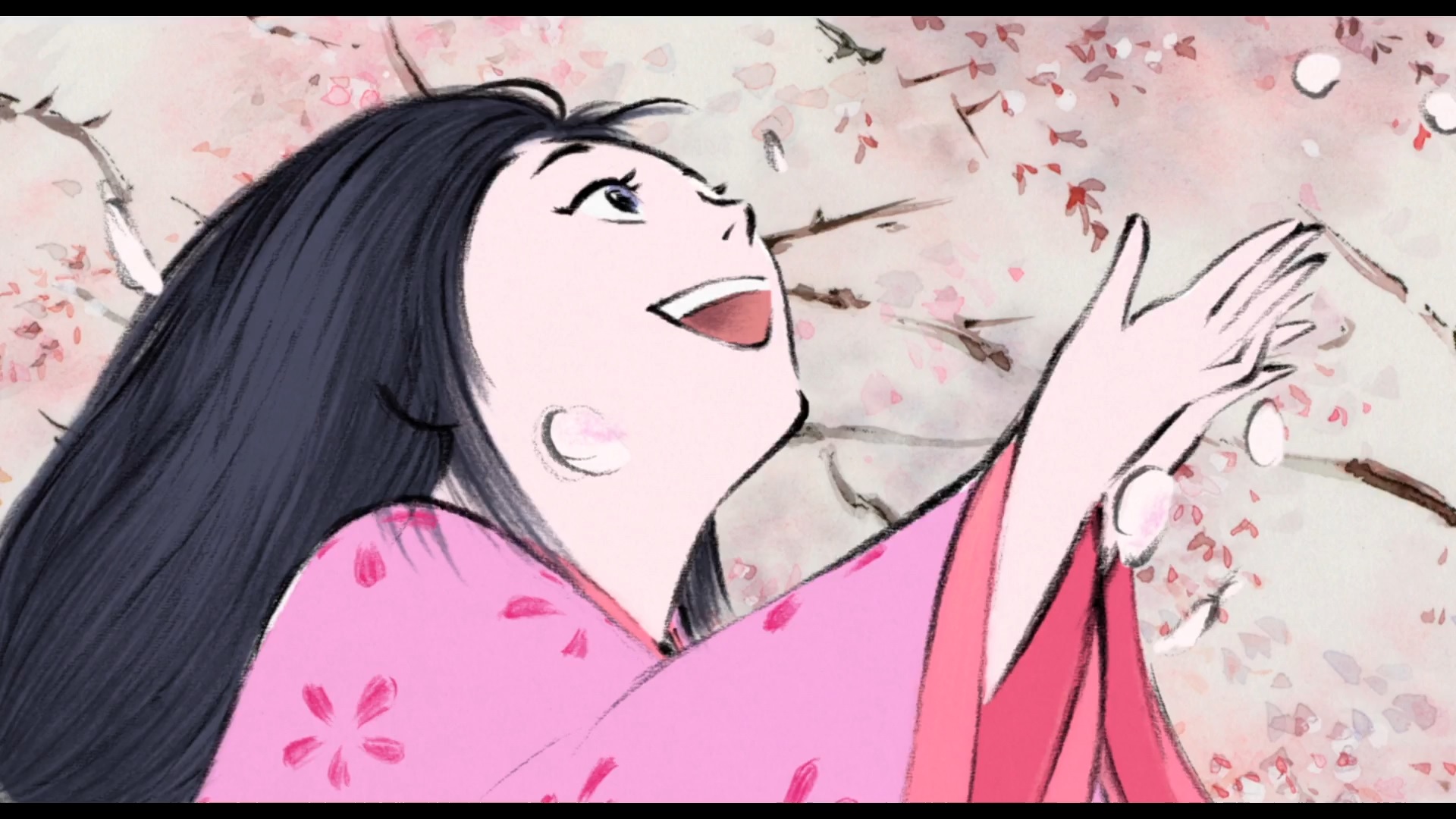
TYPE OF REVIEW ![]() : GOOD OL’ REVIEW
: GOOD OL’ REVIEW
No spoilers.

Isao Takahata creates a timeless masterpiece with The Tale of the Princess Kaguya (かぐや姫の物語). It is a stunning adaptation of one of Japan’s oldest folk tales (The Tale of the Bamboo Cutter) and it is lovingly brought to life in a memorable and profound cinematic experience.
The story begins with a bamboo cutter and his wife raising a miniature girl he finds in a glowing bamboo shoot in the forest. Believing she is a divine being, they refer to her as “princess” as they care for while she rapidly grows into a beautiful young woman.
While the girl befriends the local children in their village, her father soon finds gold and fine cloth in other glowing bamboo stalks. He believes this is a sign for them to fully treat and regard their daughter as royalty and he heads to the capital to make it happen.
When their royal mansion is constructed and servants at the ready, the young girl is surprised to learn she must leave her friends behind, including Sutemaru whom she has become the closest with. The girl continues to grow, but she becomes increasingly disillusioned by the rigorous royal customs and rules to carry herself as a member of the nobility. She yearns for their simple life back in the village.
Given the name of “Princess Kaguya,” she soon draws the eyes of several suitors and is taken by the Emperor himself. But she fights against the suffocating treatment and returns to her parents only to finally learn of her true origins.
The Tale of the Princess Kaguya is a profound coming-of-age and slice of life drama in the most epic of ways. Indeed, it is a true epic told as engagingly as any big budget, live action blockbuster.
Isao Takahata, having experimented with a sort of minimalist, watercolor-focused animation style in My Neighbors the Yamadas, creates a stunningly beautiful visual and narrative adventure.
Vivid emotions are expressed through vivid visuals which are presented in as simple a way as possible. Takahata’s use of negative space is both a visual and narrative strength. Our focus is on the characters and the moment, yet the style still provides for breathtaking, kinetic scenes for the entire film.
The ethereal, poetic flow of the story essentially chronicles the life of Princess Kaguya from her “birth” in a glowing bamboo shoot to the climactic emotional final scenes.
Despite being a story of Japanese folklore, it discusses very real, very timely and mature emotions. That of the relationship between parent and child, how parents raise their children, family and friendships and of one’s own identity.
It is easy to get lost in the breathtaking visuals and story beats, each one building upon the last to culminate in a powerful ending.
Isao Takahata’s films don’t all fit in the same mold. And that’s the wonderful beauty of his work. As his final film before his death, The Tale of the Princess Kaguya is perhaps not only one of his strongest and most affecting, but one of the best from Studio Ghibli overall.
The Tale of the Princess Kaguya is simply a breathtaking and profound epic that will truly resonate long after the credits roll.
